History
The Aging Life Care Association®, as it is known today, was originally formed by a handful of visionary women in eldercare based in New York.
Beginning in the early 1980s a group of social workers, psychologists, and nurses met regularly at the Manhattan home of Adele Elkind to discuss their work with elderly people in the private sector. Out of these meetings emerged their newly formed group -- the Greater New York Network for Aging (GNYNA).
This group was profiled in a June 1981 New York Times feature, "Private Teams Help in Care of Elderly". Meetings continued and three years later, in 1984, another New York Times article, "Care for Far-Off Elderly Relatives Sources of Help" was published noting that there were others across the country engaging in similar professional work.
In October 1985, GNYNA made history when it convened the First National Conference of Private Practice Geriatric Care Managers at the Summit Hotel in New York City. One hundred professionals from 18 states attended.” (Geri-Gazette Vol. 1 No. 1 January 1986)
With commitment and persistence, many of the following individuals from New York, along with care managers across the country, began organizing, including: Adele Elkind, Babette Becker, Jerie Charnow, Maureen Clancey, Sarah Cohen, Lenise Dolen, Jacquelyn Efram, Vanessa Gang, Leonie Nowitz, Ellen Polivy, Bernice Shepard, Gloria Scherma, Miriam Scholl, Mary Ellen Siegel, and Vera Themal. After many meetings over coffee these innovative women knew they needed to form an association and in 1985 formed the “National Association of Private Geriatric Care Managers (NAPGCM).” Membership consisted of approximately 50 members (mostly nurses and social workers), who were business owners. The association was seen as a trade association -- one dedicated to growing the businesses of members and to position those members to capture a large market share of this newly emerging field called “geriatric care management.”
Rona Bartelstone, the association’s second President, stated “from the very beginning, the association was mission-driven and committed to the highest level of services for older adults, those with disabilities, and their families. Our members learned how to take leadership in shaping the very nature of elder care service delivery in their local communities. By setting the example for excellence in care, changes have been wrought at the highest level of government, where care coordination has been written into Medicare and related health systems for the older population. Today, now known as Aging Life Care Professionals®, we continue to be dedicated experts and role models for the best in Aging Life Care™ services.”
In 1993, NAPGCM recognized that the face of care management was not exclusively in the entrepreneurial arena. It was noted that non-profit agencies had been providing services in this area, as were individuals with baccalaureate degrees. In that same year, the NAPGCM membership voted to change the association’s name to the National Association of Professional Geriatric Care Managers and to expand the voting membership base to include those individuals who provide care management in all practice settings and those with a minimum of a baccalaureate degree.
As NAPGCM changed the profile of the association to match that of the profession, the association moved from being a trade association with the primary purpose of positioning and promoting member practices to a professional association with the primary purpose of advancing the profession.
This was significant for a number of reasons. Starting small and regionally, the logical focus was to promote members in this newly-coined industry. The acceleration of the internet industry led the leaders of NAPGCM realized to gain and maintain more significance in our rapidly growing interconnected society, leveling up to advance the profession will ultimately lift its members as well.
Similarly, the NAPGCM leaders knew that if they wanted to have more impact for their clients, elevating the profession among nursing, social work, and existing geriatric fields, they needed something concrete that people could attach their membership to.
The next step in the development of the profession came when NAPGCM and Connecticut Community Care worked together to create a credentialing program for care managers. In 1996, together with eight aging network associations, they developed and initially funded the National Academy of Certified Care Managers (NACCM).
Creating a national academy that occupies itself with high standards of entrance to certification, and focusing on maintenance of these credentials became a significant differentiating mark for people focused on caring for older adults. Having credentials such as the CMC (Care Manager Certified) from a nationally recognized certifying body separated those who sought to elevate the profession and distinguish themselves from others who simply put out an “Open for Business” shingle.
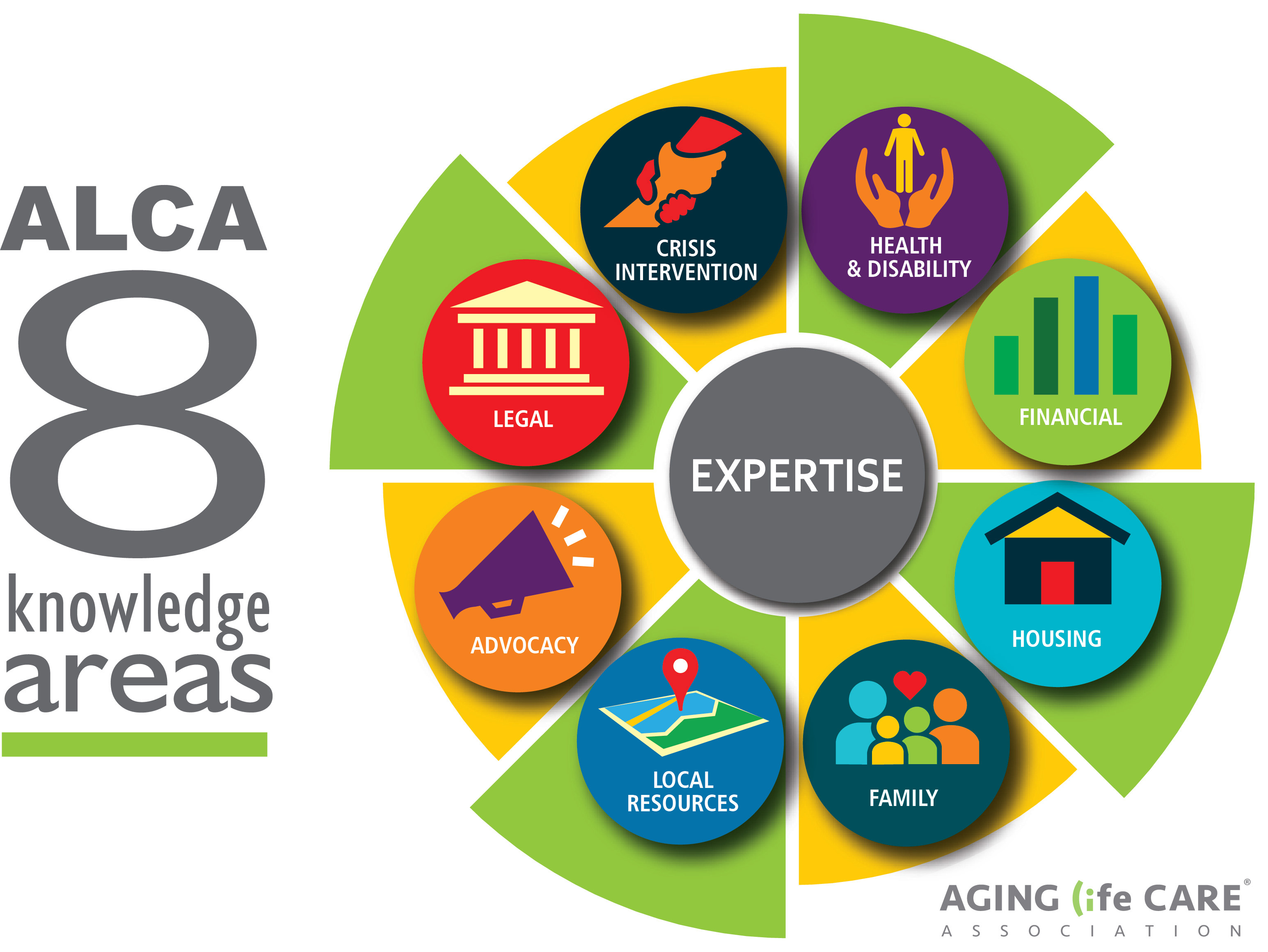 As care management evolved, so did several other “case management” associations. Fragmentation of the profession was inevitable, as no one professional truly understood the complexities of the environment of the future. The health care environment also was changing. Managed care began to infiltrate the American health care system as never before. A variety of assisted living facilities began to offer services to compete with nursing homes. Organized coalitions of health care providers began to form as they positioned themselves to work within or outside of the managed care market.
As care management evolved, so did several other “case management” associations. Fragmentation of the profession was inevitable, as no one professional truly understood the complexities of the environment of the future. The health care environment also was changing. Managed care began to infiltrate the American health care system as never before. A variety of assisted living facilities began to offer services to compete with nursing homes. Organized coalitions of health care providers began to form as they positioned themselves to work within or outside of the managed care market.
As the face of care management was changing, the association and the profession began to change as well. Technology, in the form of the NAPGCM website, webinars, member listserv, and social media quickly evolved and began to enhance members’ and consumers’ access to information.
New products provide the tools with which members can improve their businesses and stay abreast of the latest trends in their profession.
Conferences regionally, and nationally soon took place each year gaining momentum and attendance with each event. In fact, the association was formed after the first conference, when the New York Group created a regional event in 1984. 2020 marks the 36th Annual Conference, and will be the first time it is held entirely online, in response to the coronavirus COVID-19 pandemic.
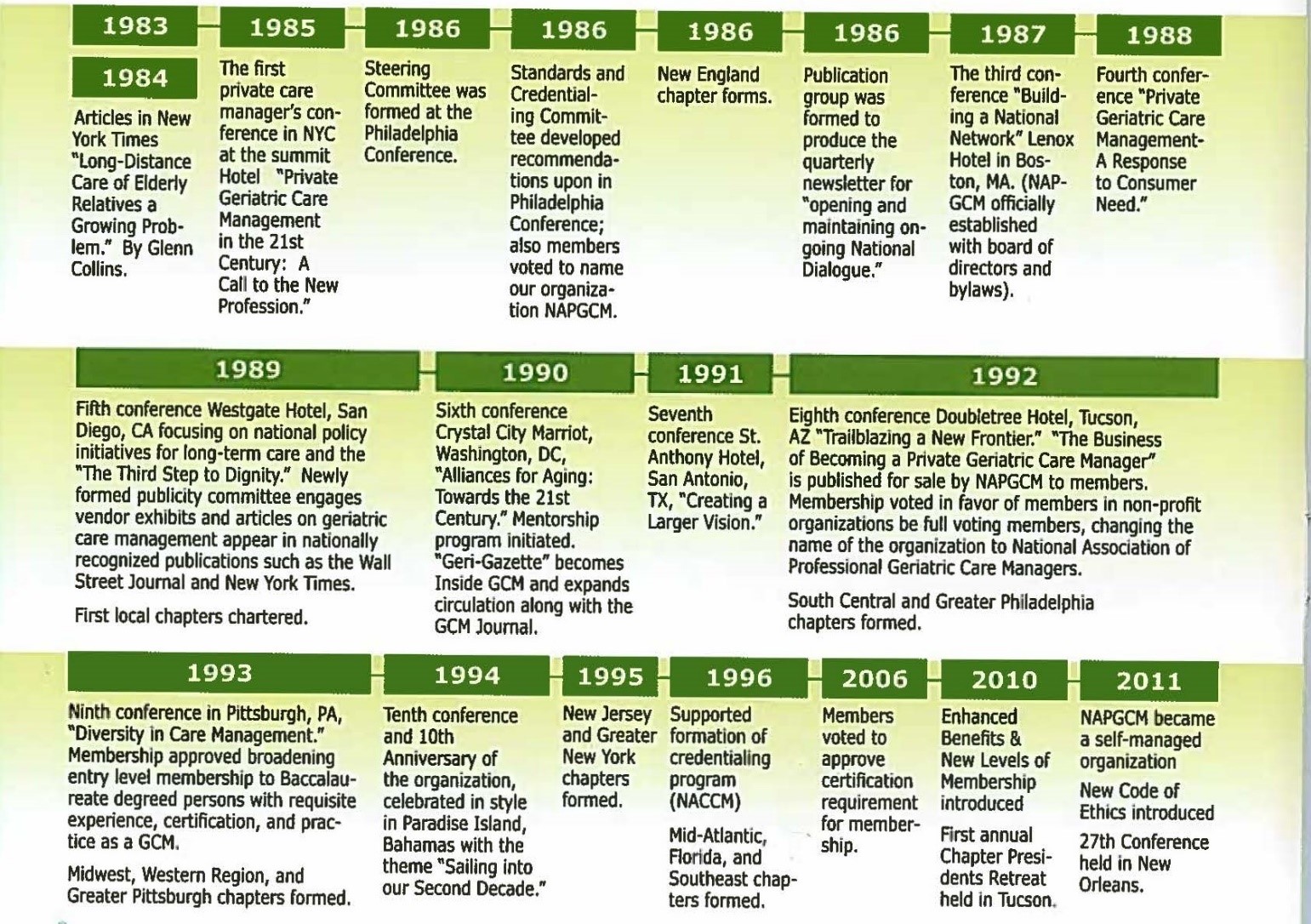
The next significant step for NAPGCM and its members took place in August 2006, when members voted to approve a new requirement that all members the in Advanced Professional category must hold at least one of four approved certifications: Care Manager Certified (CMC), Certified Case Manager (CCM), Certified Advanced Social Work Case Manager (C-ASWCM), and Certified Social Work Case Manager (C-SWCM). This requirement became effective as of January 1, 2010.
Certification became the bellwether of professional geriatric care management. By voting to approve this membership requirement, the profession was elevated and practitioners were recognized as having a specific knowledge and expertise. This also elevated consumer confidence in the services provided by NAPGCM members.
Today the Aging Life Care Association® helps consumers know when to refer to an Aging Life Care Professional, and what those referral triggers are or could be.
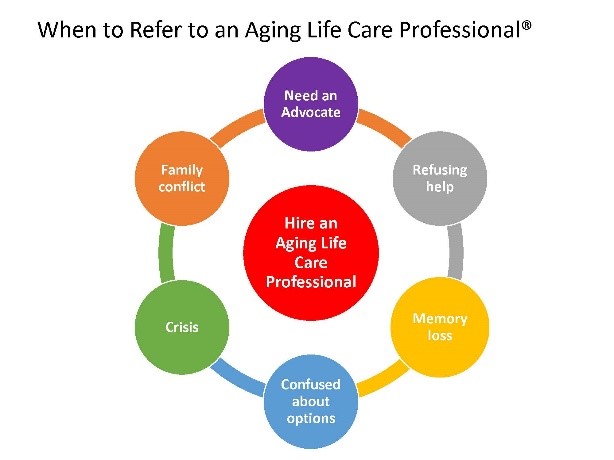
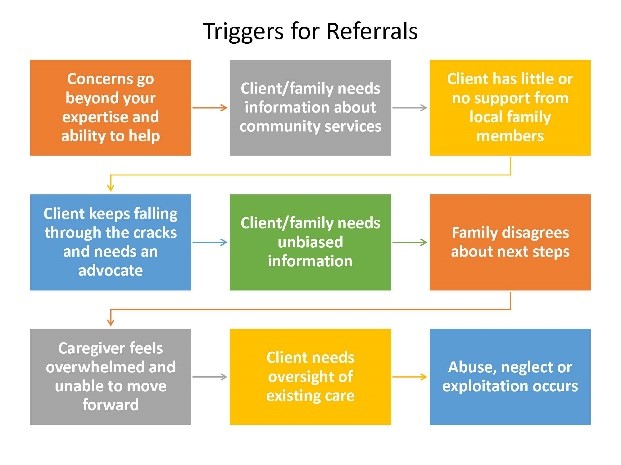
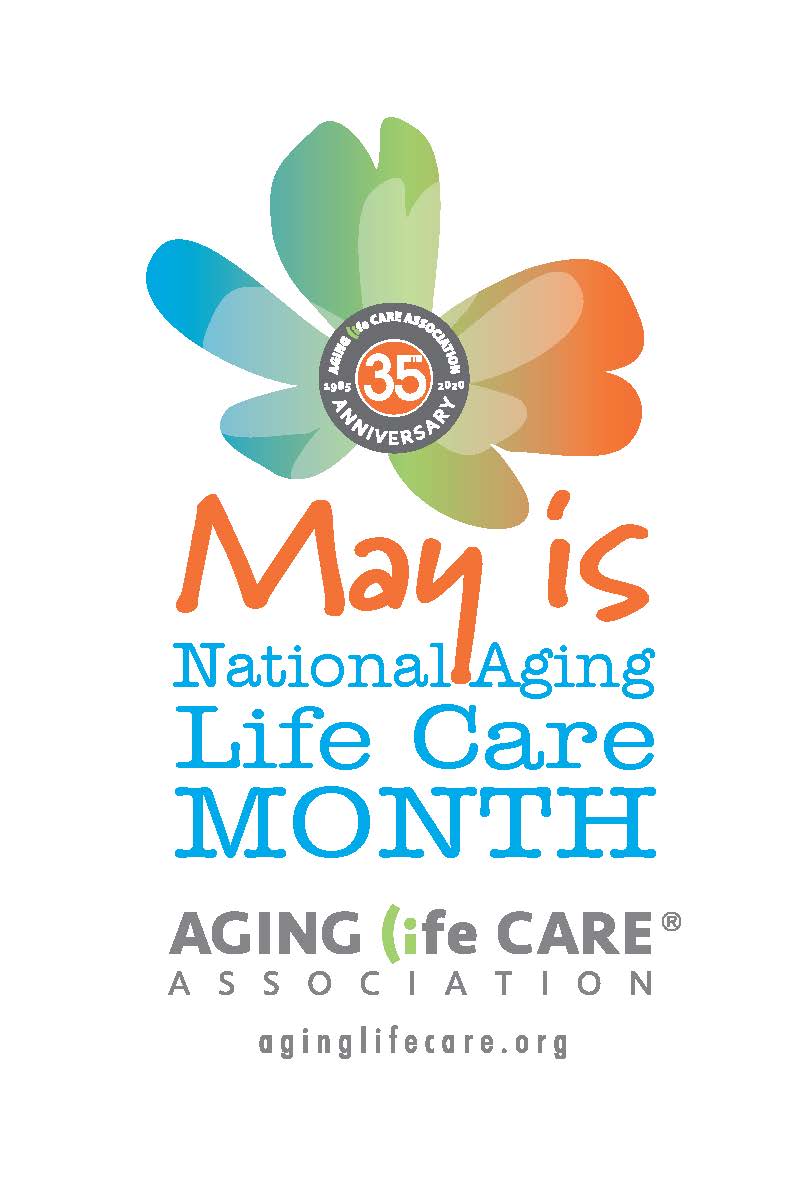 One year later, in 2012, out of a desire to celebrate the profession, NAPGCM launched a new initiative National Geriatric Care Management Month. This campaign afforded care managers the tools to educate their communities on aging well for the entire month of May. Using social media, blog posts, public seminars, webinars, letter-writing, published articles, and media releases members raise awareness and share their holistic, client-centered approach to caring for older adults, and let families know that they are the experts in aging well.
One year later, in 2012, out of a desire to celebrate the profession, NAPGCM launched a new initiative National Geriatric Care Management Month. This campaign afforded care managers the tools to educate their communities on aging well for the entire month of May. Using social media, blog posts, public seminars, webinars, letter-writing, published articles, and media releases members raise awareness and share their holistic, client-centered approach to caring for older adults, and let families know that they are the experts in aging well.
Another significant unifying feature of the association were its chapters. While ALCA has nine regional chapters, until 2013 they were all independent nonprofit corporations. Chapters began to merge with the National association as a way to streamline their operations and free up volunteer time that could be spent providing members with more benefits and educational opportunities. By the beginning of 2020, seven of the nine chapters have become a part of the National association.
Timeline of Chapter Formation
1980 – New York Chapter
1985 – New England Chapter
1989 – Western Region Chapter
1990 – Midwest Chapter
1992 – South Central Chapter
1993 – Florida Chapter
1993 – New Jersey Chapter
1995 – Mid-Atlantic Chapter
1995 – Southeast Chapter
The next bold step in the evolution of the profession was taken in 2014, when NAPGCM hired a branding consultant to evaluate the association, its brand, and the profession it represented. After extensive research, evaluations, surveys, and discussions with members, consumers and referral sources, the board approved a sweeping plan to reposition and rebrand the association and the profession. With the branding exercise, it was discovered that baby boomers would not identify with the term “geriatric”, thus effective May 1, 2015, the association began operating under a new name: Aging Life Care Association® (ALCA). Members are referred to as “Aging Life Care Professionals®, Aging Life Care Manager®, Aging Life Care Specialist®, Aging Life Care Association®, The Experts in Aging Well®”.
As the association was growing nationwide, so were its offerings. The Winter of 1990 saw the first publication of the Geriatric Care Management Journal. Initially only available to members, or by subscription, it moved online and was available to be public in 2013. Two years later, after the branding initiative, the journal was renamed the Journal of Aging Life Care™. In 2020 the journal will become a peer-reviewed publication.
The ALCA Board of Directors and Association staff continue to work to meet the demands of the changing senior services environment through careful strategic planning, education, digital marketing and public relations, chapter support, and communication with its members and the public.
Founded by innovative, entrepreneurial thinkers, the Association continues to be future-forward minded. In 2020 at the onset of the coronavirus COVID-19 pandemic, the board and staff pivoted quickly to address how to best serve members who were equally considering how to best serve their clients.
The National office quickly established a series of daily Member Forum zoom calls for members to learn from others in hot-spots what was happening, how to help clients, and best practices. Members quickly explored telehealth options and creative ways to help their clients as traditional methods were being shut-down.
If the pandemic has shown the world anything, a spotlight has been shown brightly on the world’s elderly population and how essential care workers are. Aging Life Care Managers are essential as dedicated professionals coordinating care as part of a team between older adults, families, and their life needs. Building upon our strong history we see a bright future for the field of Aging Life Care management, our members, and the association.
Read More...